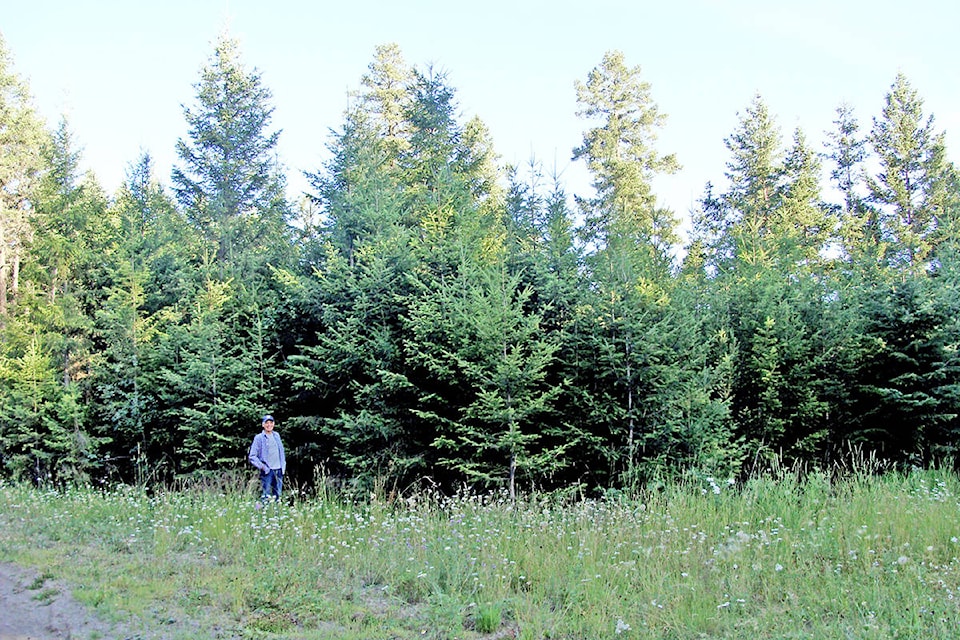Carl Hennig has had a woodlot in the Esler area on the south side of Highway 20 for 25-plus years.
After reading my article about the value of ripping landings to improve the establishment of new trees he invited me to visit his woodlot to see how some of his landings have developed a good crop of trees despite the impacts of harvesting equipment.
The roads and landings were established around 1995 over most of the woodlot so he could easily salvage fir bark beetles. Most of the felling and bucking was done by chainsaws in the days before log processors. Residual materials were moved and trucks loaded with a tracked machine. After the logs were shipped to the mill the residual material was piled and burned on the landing in the winter. Carls’ long term plan was to use the roads and landings as permanent structures for accessing future salvage operations but his activities on the landings created a near perfect seed bed for the fir seed coming from the adjacent mature fir trees. The establishment seemed to be concentrated on the burned pile areas. Some measurements showed the tallest trees were 25 years old, six inches in diameter and 40 feet tall with tree densities between five and 10 thousands stems per hectare ( the higher densities were smaller trees around the edge of the new stand). Dense patches are not uncommon in fir stands but these new stands (on most of his landings) appeared above average height and densities.
Carl thinks the abundance of light along with a good seed bed are probably the main factors for the good establishment with fewer trees on portions of the landing due to more shading. While I agree that light is important my suspicion was that the burning on the landings may also have an important role. I have seen some burn piles with a six to 12 inch mix of ash and char which supports a superior crop of grass and forbs compared to the adjacent compacted soils. To confirm some of my suspicion I dug some soil pits where we felled one of the taller trees to do a ring count and height measurement. A number of soil samples showed a dark upper layer and char fragments through the top six inches of soil.
READ MORE: Private land improvement ideas shared
While much more sampling would be needed to confirm some of our theories it is very impressive how the trees have become established on some parts of the landing and not others.
I have been doing some experiments with establishing trees on my own property but it will take decades to see the long term results while the re-established stands on Carl’s woodlot represent close to three decades of growth which can be studied to see if these principles could be applied to future stands. Unfortunately the research section of the government has been severely reduced and very limited on what studies can be undertaken.
For those who may be interested in reading more about the challenges in rehabilitating landings there are some good articles by Matthew Plotnikoff, Margaret Schmidt, Chuck Bulmer and Mike Curran who worked in the north of the province as well as an article by Bill Chapman who worked in the Cariboo region.
Jim Hilton is a professional agrologist and forester who has lived and worked in the Cariboo Chilcotin for the past 40 years. Now retired, Hilton still volunteers his skills with local community forests organizations.
